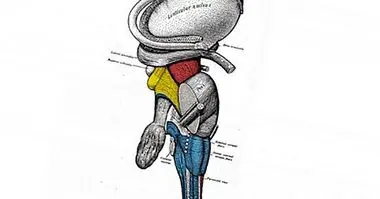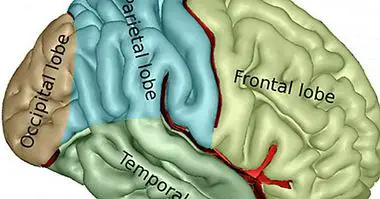Neurogastronomy: eating with the palate, an act of the brain
In different articles of Psychology and Mind We have already discussed issues related to the Psychology of Nutrition.
A field that becomes essential today, because the culture of aesthetics requires the support of psychology to avoid pathologies or eating disorders such as anorexia or bulimia.
What is neurogastronomy?
In the treatment of obesity, no one would doubt its usefulness, since individuals with this condition usually suffer comorbidity problems with certain psychological disorders that can interfere in the evolution and treatment of their improvement program and, therefore, it is necessary to detect them. Psychologists can work with other nutrition and dietetics professionals in certain circumstances, as some patients who undergo dietary treatment need to be referred to a psychologist in order to successfully complete the treatment in the nutritional intervention.
But psychology applied to nutrition is not only important for pathological treatment, but also useful in normal conditions. In recent years, interest in neurogastronomy is growing , because scientific and technological progress has allowed us to investigate in greater depth the processes that take place in our body and our mind around food. Eating is not just an instinctive act, but the five senses come into play, as well as certain psychological aspects such as expectations, memory or emotions.
Eating with the palate, an act of the brain
Eat with the palate It is an act of the brain, that is why each one has a different and subjective interpretation about the flavors. But first of all, to understand the concept of palate, we must be clear about the difference between taste Y taste.
Differentiating between taste and flavor
The taste It is one of our five senses like smell, hearing, sight and touch, and it is what we experience when food comes in contact with our tongue and other surfaces of the mouth, and it can be five: sweet, sour, bitter , salty and umami. Now, recognizing taste is more than recognizing the taste . Although there are only five basic tastes, they are combined in different ways and are influenced by the rest of the senses (for example, smell and sight) providing a great variety of sensory experiences.
In summary, it can be said that the taste information is collected in the language, specialized in its reception , specifically in their specialized nervous receptors for this task, which are the gustatory buttons. These transform the sensory stimulus (taste) into an electrical impulse, called the action potential, which is transmitted to the neurons connected to these receptors and carries it to the brain through its specific nervous pathway. In the brain this information is received and processed, becoming conscious. But in addition, in the brain it integrates and compares the different properties of the food: its taste, its taste, its smell, its texture ... That's why, when we eat a chocolate ice cream, we feel the temperature, the texture or the shape.

In the experience of eating, memory, emotions and expectations also intervene
Not only that, but when we taste the food, too Other brain areas are involved related to memory, expectation or emotions , that is why we are able to remember our childhood when we go back to take those cookies that we used to eat as children in grandmother's house.
And eating is not only an act of survival. This has been noted by chefs and experts in gastronomy, who are aware of the importance of all the senses in the taste experience, because They know that if it were not for the interpretations that our neurons make of external stimuli, gastronomy would not exist .
In the line of research of neurogastronomy, science in recent years has carried out different findings, such as that culture influences our perception of flavors, or that appearance is crucial when tasting food: the way of the utensils with which we are going to eat, the presentation and color of the dishes, and even the price of food or drinks (for example, wine), affect our perception of flavors.
The role of nutrition in emotional balance
Psychologists have not only been interested in neurogastronomy, but have been interested for more than a decade about their relationship with emotions and well-being. Nutrition affects our mind in different ways: our ability to concentrate, our memory, our emotional well-being or our state of mind.A healthy diet, along with healthy habits, are important to maintain emotional balance.
What we eat affects our mind directly . For example, providing the nutrients and macronutrients (omega 3, tryptophan, carbohydrates ...) necessary for a correct nutritional balance. An unbalanced diet can produce specific deficiencies that are manifested by symptoms or sensations such as apathy, reluctance, irritability, nervousness, fatigue or lack of attention.
But our diet can also indirectly affect our mind, for example, by helping us to see ourselves better. On the other hand, emotional balance also makes it easier for us to follow healthy habits. If we are stressed or sad, it becomes more difficult to carry out a healthy diet.
Mood Food: happy foods
For a few years a gastronomic trend has been successful. It is the "mood food" (or kitchen of happiness), his followers affirm that it contributes to a greater general well-being and increases the mood .
The mood food is made up of different foods that increase the production of chemical substances (called neurotransmitters) that influence our state of humor, such as endorphins or serotonin.
Serotonin, a key neurotransmitter
Serotonin, which is derived from an amino acid called tryptophan, sends messages within the brain and through the nervous system, and participates in many processes such as regulating mood or appetite. Since the body does not produce tryptophan, it must be obtained from the diet. It is found in different foods: chicken, milk, cheese, fish, eggs, tofu, soy, nuts, chocolate ...
Science states that the low levels of this neurotransmitter are related to negative moods and depression. Therefore, individuals with depressive disorders or emotional problems often go in search of food, especially chocolate, to feel better and calm their mood. Lack of serotonin causes different negative effects on the body, such as anguish, sadness or irritability. It is often said that foods rich in this amino acid act as natural antidepressants.
This neurotransmitter has an important function in the brain since establishes the balance between other neurotransmitters such as dopamine or noradrenaline . These neurotransmitters are important since they are related to anguish, anxiety or eating disorders.



















